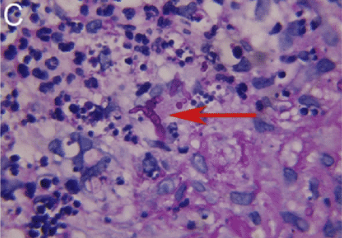Cellulitis
Content of This Page
1- Introduction
2- Causes
3- Symptoms
4- Stages of The Disease
5- Treatment
6- What Should You Avoid
Introduction
Cellulitis is a bacterial skin infection that causes redness, swelling, and pain in the affected area. It commonly affects the legs, but it can occur anywhere on the body. The infection can spread rapidly and requires prompt treatment with antibiotics to prevent complications. Symptoms typically include warmth, tenderness, and swelling of the skin.

Causes
- Streptococcus: A type of bacteria that frequently causes cellulitis.
- Staphylococcus: Another common bacterial cause, including Methicillin-resistant Staphylococcus aureus (MRSA).
- Fungal Infections: Though less common, some fungi can cause cellulitis.
- Insect Bites or Stings: Can introduce bacteria into the skin.
- Pre-existing Skin Conditions: Such as eczema or athlete’s foot that can make the skin more susceptible to infection.
- Surgical Procedures or Wounds: Open wounds or surgical sites can become infected.
- Animal Bites or Scratches: Can introduce bacteria into the skin.
Symptoms
- Redness: Affected area of the skin becomes red and inflamed.
- Swelling: The skin and underlying tissues swell.
- Pain: The affected area is tender and may be painful.
- Warmth: The skin feels warm to the touch.
- Fever: Often accompanied by fever and chills.
- Red Streaks: In severe cases, red streaks may radiate from the infected area.

Stages of The Disease
Initial Infection:
- Symptoms: Mild redness and swelling at the site of infection. The area may be warm and tender.
- Description: Bacteria enter through a break in the skin and begin to spread.
Early Stage:
- Symptoms: Increasing redness, swelling, and pain. Possible fever and general malaise.
- Description: Infection starts to spread to surrounding tissues, and symptoms become more pronounced.
Advanced Stage:
- Symptoms: Significant swelling, intense redness, and warmth. Fever, chills, and possibly nausea or vomiting. Red streaks may appear.
- Description: The infection spreads rapidly, and the affected area may become increasingly painful. Complications such as abscesses can form.
Severe Stage (if untreated or complications occur):
- Symptoms: Severe pain, extensive redness and swelling, high fever, and systemic symptoms like confusion or weakness. Potential complications such as sepsis or lymphangitis.
- Description: The infection can become severe, potentially leading to serious complications. Urgent medical treatment is required to prevent further issues.
Treatment
Antibiotics:
- Oral Antibiotics: Commonly prescribed for mild to moderate cases.
- Intravenous Antibiotics: Used for severe cases or when oral antibiotics are not effective.
Wound Care:
- Cleaning the Area: Keeping the affected area clean and covered with a sterile dressing.
- Elevating the Limb: If the infection is in a limb, elevating it can help reduce swelling.
Pain Relief:
- Over-the-Counter Painkillers: Such as ibuprofen or acetaminophen to manage pain and reduce fever.
Rest and Hydration:
- Rest: Allowing the body to heal by getting plenty of rest.
- Hydration: Drinking fluids to stay hydrated.
Monitoring:
- Follow-Up: Regular monitoring to ensure the infection is responding to treatment and to check for any complications.
Treatment of Underlying Conditions:
- Managing Chronic Conditions: Such as diabetes, which can increase the risk of infection.
What Should You Avoid
- delaying treatment.
- ignoring wounds.
- using non-sterile dressings.
- overusing antibiotics.
- scratching or irritating the skin.
- applying home remedies.
- ignoring follow-up care.